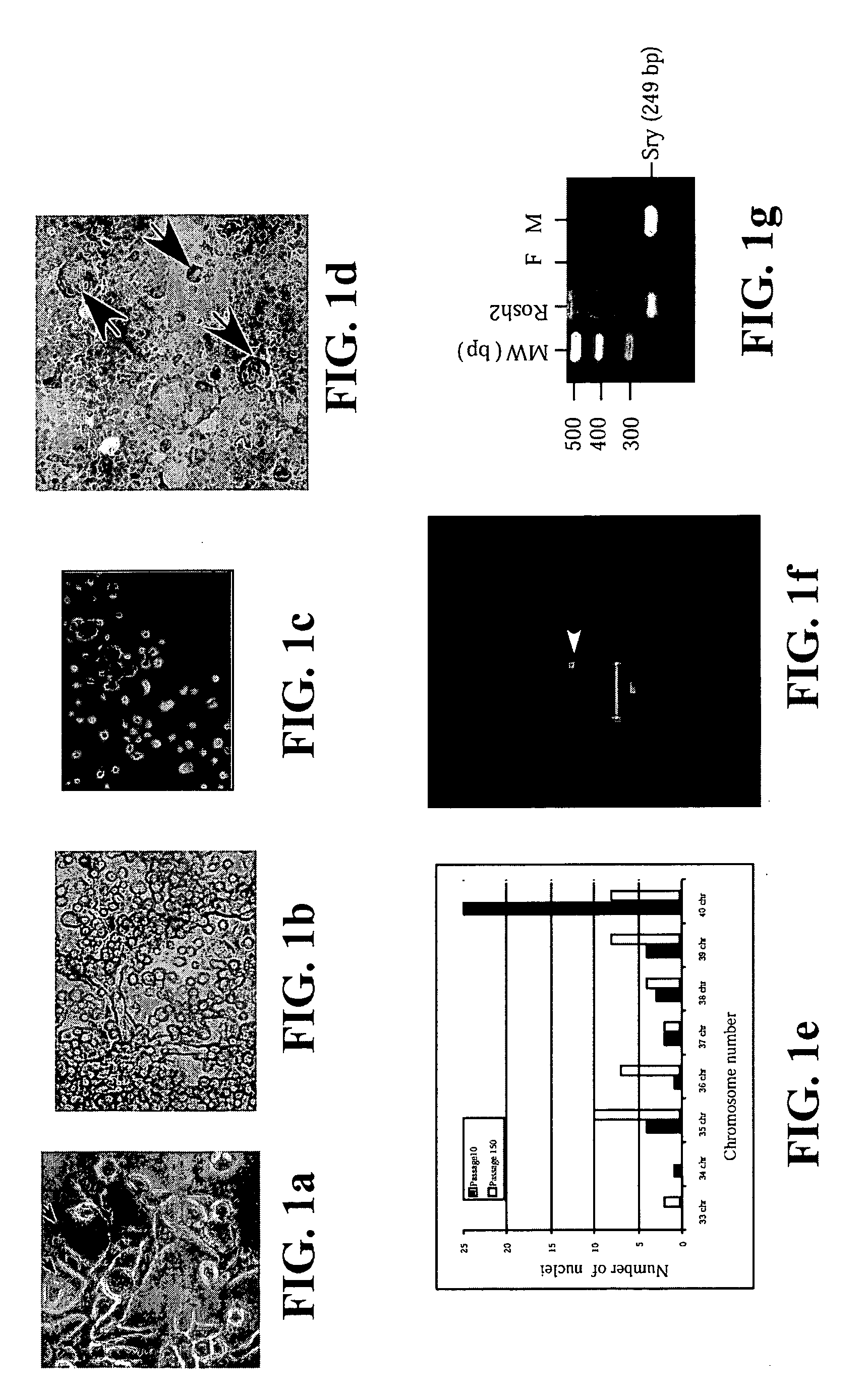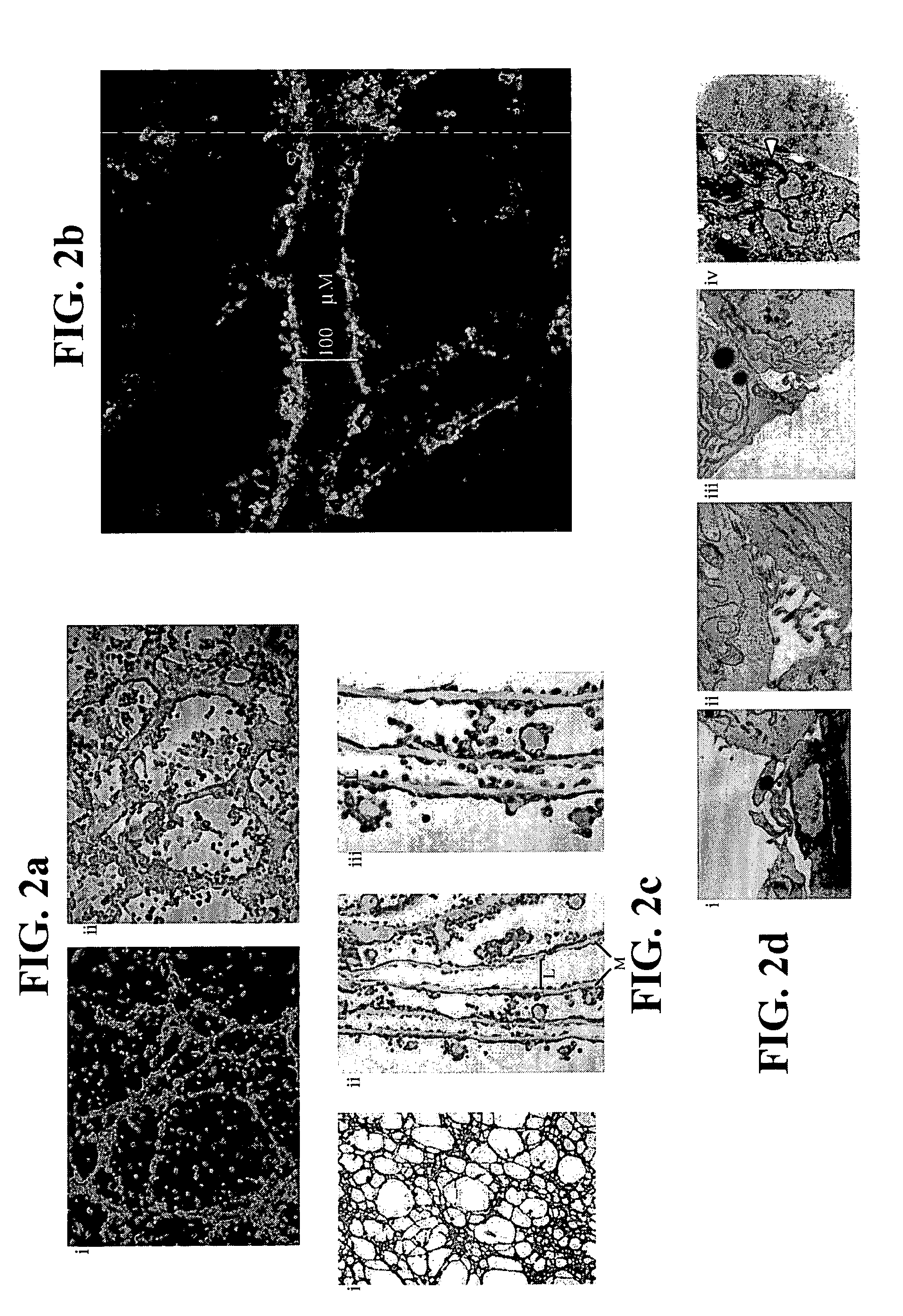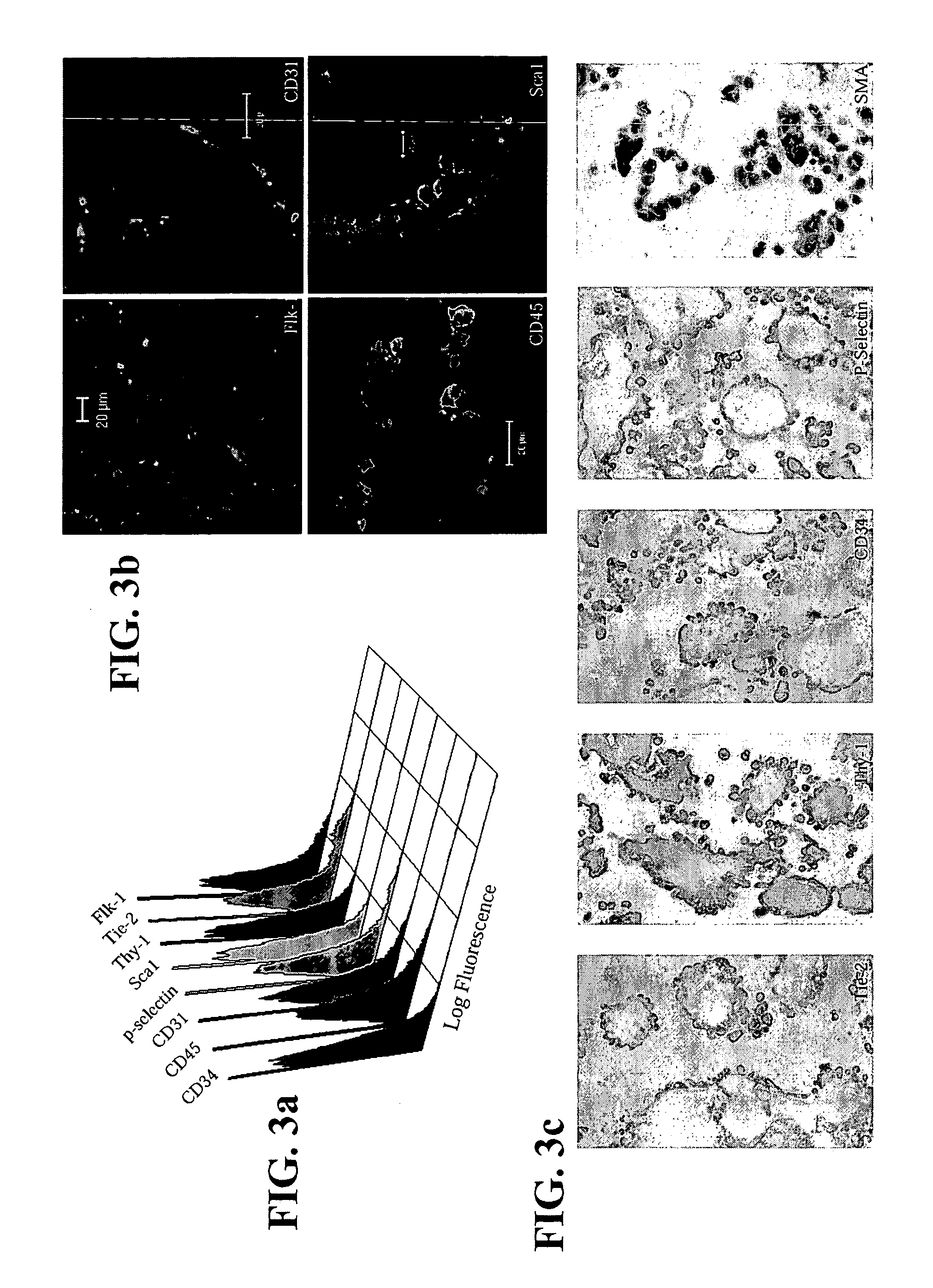Hemangioblast progenitor cells
- Summary
- Abstract
- Description
- Claims
- Application Information
AI Technical Summary
Benefits of technology
Problems solved by technology
Method used
Image
Examples
example 1
Materials and Methods
[0088] Derivation of RoSH2 cells: All animal experimentation protocols were approved by National University of Singapore Animal Ethics Research Committee. B6.129S7-GtRosa26 mice were purchased from Jackson Laboratory (Bar Harbor, Me.). 5.5 dpc delayed blastocysts and 6 to 7.5 dpc embryos were prepared as previously described (Robertson, 1987). For 6 to 7.5 dpc embryos, the egg cylinders were dissected out and were placed next to the extra-embryonic tissues for culture. The embryos were cultured on tissue culture dish in ES cell media. For the older embryos, the extra-embryonic tissues were removed after the embryos attached and started proliferation. For 5.5 dpc delayed blastocysts, when the growths reached a size visible to the naked eye, they were disaggregated into cellular clumps with trypsin and then transferred to a 1 cm culture dish with embryonic fibroblast feeder as previously described for isolation of mouse ES cells (Robertson, 1987). The cultures w...
example 2
Preparation of Hemangioblast Cell Lines from Embryonic Stem Cells
[0110] 2×104 single ES cells in 100 μl ES media ES cells were cultured in 3.9 ml methycellulose media (MethoCult M3134, StemCell Technologies, Inc, Vancouver, Canada), 4.2 ml IMDM (Life Technologies, Rockville, Md.), 1.5 ml Serum, 100 μl monothioglycerol stock solution (37.8 μl in 10 ml PBS) (Sigma, St Louis, Mo.) 100 μl 100× L-glutamine / Penicillin / Streptomycin stock solution (Life Technologies, Rockville, Md.). Six days later, colonies of cells or EBs were clearly visible to the naked eyes. The EBs were then dissociated into cell suspensions by incubating the EBs in 0.15% (w / v) collagenase / PBS supplemented with 20% (v / v) FCS at 37° C. for 30 minutes and then disrupting the cell clumps by passing the solution through a syringe with a 20-gauge needle 3 times. After another 30 minutes of incubation, the disruption was repeated with a 25-gauge needle. These cells were then plated on mitomycin C-treated embryonic fibrobl...
example 3
Preparation of Hemangioblast Cell Lines from Bone Marrow
[0112] Adult bone marrow (BM) was prepared from mice, pigs and humans. For mice, BM was flushed from the femurs of B6.129S7-GtRosa26 with saline using a needle and syringe. In pigs, BM was aspirated from the femur of pigs. Human BM was harvested by scraping from the split sternum of patients undergoing CABG surgery at NUH. The common denominator in all these procedures is the preservation of some BM tissue integrity in tissue clumps of 0.1 to 1 mm3 in volume. Each piece of tissue was cultured individually on 48-well mitomycin C-treated mouse embryonic fibroblast feeder plates in ES cell media. Most of the BM pieces attached to the plates within 24 hours. The cultures were maintained with changes of fresh media every two to four days. Over a period of one week, cells appeared to migrate out of the BM pieces. During the first week, the culture was a complex mix of cell types with much cell proliferation and cell death occurring...
PUM
| Property | Measurement | Unit |
|---|---|---|
| Therapeutic | aaaaa | aaaaa |
Abstract
Description
Claims
Application Information
 Login to View More
Login to View More - R&D
- Intellectual Property
- Life Sciences
- Materials
- Tech Scout
- Unparalleled Data Quality
- Higher Quality Content
- 60% Fewer Hallucinations
Browse by: Latest US Patents, China's latest patents, Technical Efficacy Thesaurus, Application Domain, Technology Topic, Popular Technical Reports.
© 2025 PatSnap. All rights reserved.Legal|Privacy policy|Modern Slavery Act Transparency Statement|Sitemap|About US| Contact US: help@patsnap.com



